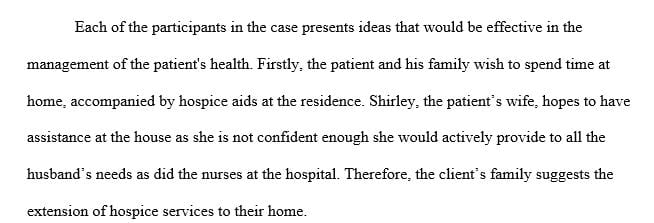After the third step of collaboration in the multidisciplinary approach, it is important to have a clear idea of how each member of your multidisciplinary team sees the issues and a basic understanding of the thinking behind each viewpoint. As a multidisciplinary team member, you are in a better position to look for key elements of a collaborative solution and to select a course of action. The key to this process of synthesis and collaboration is what some researchers (Meek & Newell, 2005) refer to as the beginning of looking for ways in which each viewpoint may be positively accommodated without ruling out another point of view. Selecting a course of action begins by simply listing the criteria of a collaborative solution, stated as positively as possible.
In your initial post for this discussion:
Identify the key idea from each participant in Sheldon Greenberg’s situation as depicted in the Riverbend City missions including professionals, client, and client’s family.
State each in a positive way, as a criterion for a collaborative solution. With each statement, provide a sentence or two explaining how you think that participant views the issue, and why this particular criterion is so important to him or her. A table might be a good way to display this.
Create a problem statement that reflects the main problem agreed upon by the group.
Below is an example of how to organize the criteria and the solution criteria using the characters from a Charles Schultz’s Peanuts comic strip:
Schroeder’s key criterion: Always stay focused on your art. There are many people in the world who are bored and will try to distract you from your music. If you let them distract you from your purpose, you will never achieve your best work.
Charlie Brown’s key criterion: Achievement depends on teamwork, and teamwork requires patience with others. Charlie Brown believes that all real achievement is shared. He believes that he must give others the chance to demonstrate their ability to contribute, and therefore, exercises restraint and trust in critical situations.
No there is no pages is just a discussion for 300 words thats all
Thank You once again please read the 2 attachment before you do the assignment because the discussion is based on those attachments Thanks



